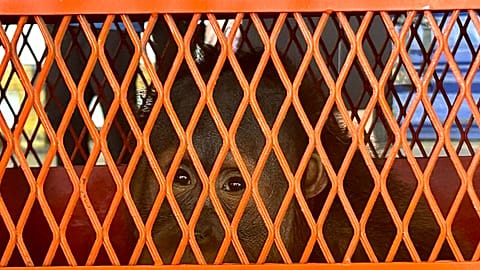From Texas to Sweden, misinformation about wind farms tends to circulate as the mercury drops. Here’s what you need to know.
Wind energy is fast becoming the backbone of electricity grids in Europe, meeting almost a fifth of the region’s power needs.
That figure is significantly higher in a number of northern countries: 55 per cent in Denmark, by leading example, and 34 per cent in Ireland. There are just under 3,000 wind turbines in the icy waters of the North Sea, and even a few in Antarctica.
So wind turbines can clearly stand strong in cold climates. But, as with other renewables, green energy sceptics like to talk them down.
A recent viral blog post claimed that a cold spell in Sweden earlier this month led to a “massive loss in electricity production” from wind farms, suggesting they would fare better “if we had some global warming”.
That may be hard to take in good faith, but is there any truth to the wind versus winter stories?
Do wind turbines freeze in cold weather?
Wind turbines are designed to withstand freezing temperatures down to around -30 degrees Celsius.
Ice can form on turbine blades under certain conditions; not just when snow or freezing rain falls, but also during times of high wind chill or high humidity when fog descends.
This icing is a concern because it can affect the aerodynamics of the blades (essentially making the surface rougher) thereby reducing their efficiency and potentially causing imbalance issues. Wind turbines might need to stop spinning to avoid these issues, WindEurope, the region’s wind energy association, explains.
Turbines can also be stopped for safety reasons, to prevent ice being thrown from the blades. “The greatest risk of falling ice is if the wind turbine is iced up and the temperature then rises or if the sun comes out and heats up parts of the wind turbine,” says Svensk Vindenergi, the Swedish Wind Energy Association.
SWEA has calculated a reasonable safety distance during cold days (the tower height plus turbine diameter), and says it is not aware of any person being injured by falling ice.
How do wind turbines cope with freezing temperatures?
While ice can cause a headache for wind farm operators, the industry has come up with plenty of solutions to prevent it forming in the first place - or to melt it away.
Modern turbines are equipped with de-icing technologies deployed from the control rooms of wind farms. These include heating systems inside the blades like hot air circulation, mechanical de-icing devices or fluids, and blade vibration systems.
One Swedish company, Skellefteå Kraft, has pioneered a way of coating the blades with a thin layer of carbon fibre which is heated up when ice threatens.
Nordex, another manufacturer based in Germany, offers ‘cold climate packages’ that it claims can reduce energy losses up to 80 per cent under icing conditions.
Writing for science news site The Conversation, aerospace engineering professor Hui Hu points out that most of the strategies for keeping ice off wind turbine blades come from aviation.
But as the wind industry expands, more and more investment is going into optimising these vertebrae of the energy transition.
“If [ice] still occurs, the plants are normally shut down and a service company comes to the site to carry out de-icing,” says SWEA. In these rare situations, helicopters can be flown in to de-ice turbines.
Disinformation about wind energy in winter
In February 2021, the US state of Texas suffered a record bout of cold weather, leading to power outages.
Some turbines froze at the height of the chill, leading to a 16GW loss in capacity in wind and other renewable energy supplies, according to the state's main energy supplier, the Electricity Reliability Council of Texas (ERCOT).
Though green energy critics were quick to blame wind farms for the desperate situation, ERCOT’s figures showed a much bigger shortfall (30GW) from the failure of fossil gas, coal and nuclear sources.
And the wind turbines’ troubles were largely down to the fact that they had not been designed for such cold conditions.
“The primary issue with the wind turbines in Texas is that such extreme cold weather was not expected based on the historical record of weather, and therefore the developers did not weatherize the wind turbines,” says Michael Howland, professor of civil and environmental engineering at MIT university.
“It is disgraceful to see the long-time antagonists of clean power - who attack it whether it is raining, snowing, or the sun is shining - engaging in a politically opportunistic charade misleading Americans to promote an agenda that has nothing to do with restoring power to Texas communities,” then American Clean Power CEO Heather Zichal said at the time.
“It is an extreme weather problem, not a clean power problem. If anything, it shows why we need to be investing in building out more renewable energy sources with better transmission and storage to replace outdated systems.”
Much misinformation about the Texas turbines was shared with an image of a helicopter flying in to rescue them.
But fact checkers proved the picture actually shows an Alpine Helicopters aircraft using hot water to clear ice from a turbine in Sweden in 2014.
The company’s CEO has said that this airborne fix is “a better option than not doing anything at all,” as getting a powerful turbine back up and running quickly helps save carbon emissions from fossil fuels - what wind turbines are best at.


















